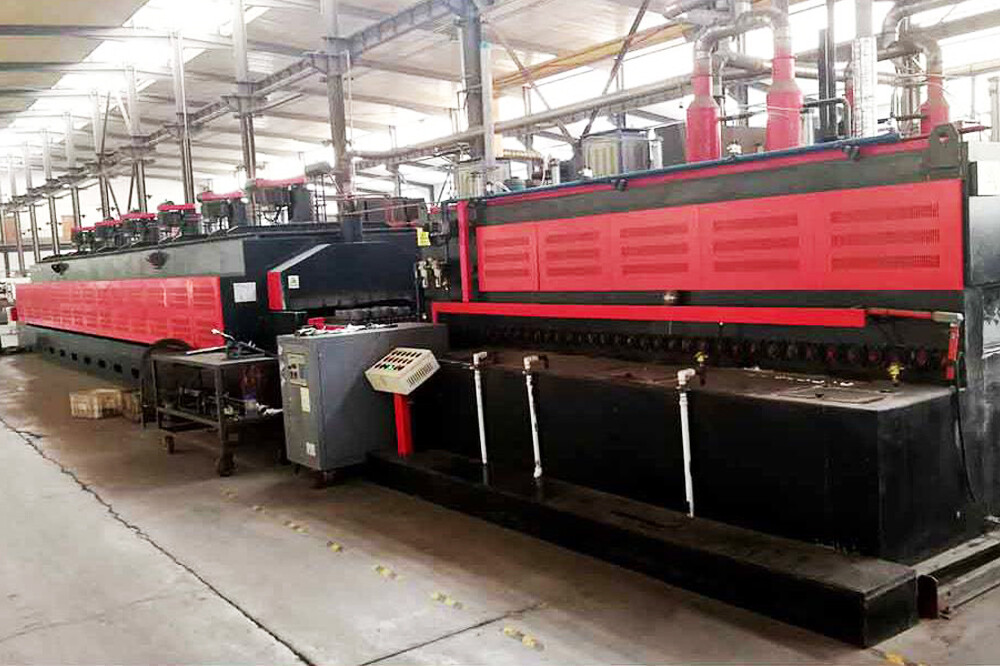
Bearing Manufacturer & Supplier
Specialize in ball bearings, roller bearings, thrust bearings, thin section bearings etc.
Material Factors Affecting Bearing Life
The early failure modes of bearings mainly include cracking, plastic deformation, wear, corrosion and fatigue. Under normal conditions, bearing failure is primarily due to contact fatigue. In addition to service conditions, bearing failure is mainly restricted by the hardness, strength, toughness, wear resistance, corrosion resistance and internal stress state of steel. The main factors causing failure due to bearing materials are as follows.
Table of Contents
ToggleBearing steel affects bearing life
Bearing steel (AISI 52100 & GCr15) is one of the main factors that affects the life of bearings. It mainly uses material selection, material guarantee and heat treatment to ensure the improvement of bearing life. Rolling bearings are generally made of high-carbon chromium bearing steel, and their chemical composition remains almost unchanged. However, different smelting methods lead to different purity of materials, which has a great impact on the lifespan. Under the same contact stress conditions, the contact fatigue life of ceramic bearings is better than that of steel bearings; in the case of high speed, light load and small impact load, ceramic ball bearings can be preferred. It can be seen that the impact of materials on the fatigue life of bearings is very significant.
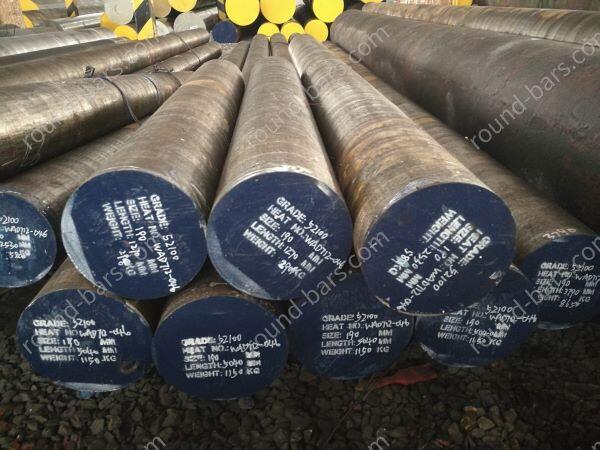
Martensite state of bearing steel
When the original structure of high-carbon chromium steel is granular pearlite, in the low-temperature tempering state after quenching, the carbon content of the quenched martensite will significantly affect the mechanical properties of the steel. The strength and toughness are around 0.5%, the contact fatigue life is around 0.55%, and the crush resistance is around 0.42%. When the carbon content of GCr15 steel quenched martensite is 0.5%~0.56%, the strongest resistance to failure can be obtained comprehensive mechanical properties.
The martensite obtained in this case is cryptocrystalline martensite and the measured carbon content is the average carbon content. In fact, the carbon content in martensite is not uniform within the micro-region. The carbon concentration near the carbide is higher than that of the original ferrite far away from the carbide. Therefore, the temperatures at which they begin to undergo martensitic transformation are different. This inhibits the growth of martensite grains and the display of microscopic morphology and becomes cryptocrystalline martensite. It can avoid microcracks that easily occur when high carbon steel is quenched, and its substructure is strip martensite with high strength and toughness. Therefore, only when medium-carbon cryptocrystalline martensite is obtained during quenching of high-carbon steel, can bearing parts achieve the best state of resistance to failure.

Residual austenite in bearing steel
After quenching, high carbon chromium steel can contain 8%~20% Ar (retained austenite). Ar in bearing parts has advantages and disadvantages. In order to adjust to the best condition, the Ar content should be appropriate. Since the amount of Ar is mainly related to the austenitization conditions of quenching and heating, its amount will also affect the carbon content of quenched martensite and the amount of undissolved carbides. It is difficult to accurately reflect the impact of Ar amount on mechanical properties. To this end, the austenitic conditions were fixed and the austenitizing thermal stabilization process was used to obtain different amounts of Ar. The effect of Ar content on the hardness and contact fatigue life of GCr15 steel after quenching and low-temperature was studied. As the austenite content increases, the hardness and contact fatigue life increase, and then decrease after reaching the peak, but the peak Ar content is different. The hardness peak appears at about 17% Ar, while the contact fatigue life The peak occurs at around 9%.

When the test load decreases, the impact on the contact fatigue life due to the increase in Ar content decreases. This is because when the amount of Ar is small, it has little effect on strength reduction, but the toughening effect is obvious. The reason is that when the load is small, Ar undergoes a small amount of deformation, which not only reduces the stress peak, but also strengthens the deformed Ar through processing and stress-strain-induced martensitic transformation. However, if the load is large, the large plastic deformation of Ar and the matrix will cause local stress concentration and rupture, thereby reducing the service life. It should be pointed out that the beneficial effect of Ar must be in the stable state of Ar. If it spontaneously transforms into martensite, the toughness of the steel will be sharply reduced and the steel will become embrittled.
Undissolved carbides in bearing steel
The quantity, morphology, size and distribution of undissolved carbides in quenched steel are affected not only by the chemical composition of the steel and the original structure before quenching, but also by the austenitizing conditions. Regarding the impact of undissolved carbides on bearing life, There are fewer studies on the impact. Carbide is a hard and brittle phase. In addition to being beneficial to wear resistance, it will cause stress concentration with the matrix during load-bearing (especially if the carbide is non-spherical) and cause cracks, which will reduce toughness and fatigue resistance. In addition to its own impact on the properties of the steel, the quenched undissolved carbides also affect the carbon content and Ar content and distribution of the quenched martensite, thereby having an additional impact on the properties of the steel.

In order to reveal the impact of undissolved carbides on performance, steel with different carbon contents was used. After quenching, the martensite carbon content and Ar content were the same but the undissolved carbide content was different. After tempering at 150°C, Since martensite has the same carbon content and higher hardness, a small increase in undissolved carbides will not increase the hardness much. The pressure load reflecting strength and toughness will decrease, but the contact fatigue life, which is sensitive to stress concentration, will increase significantly. reduce. Therefore, excessive quenching undissolved carbides is harmful to the comprehensive mechanical properties and failure resistance of steel. Appropriately reducing the carbon content of bearing steel is one of the ways to increase the service life of bearings.
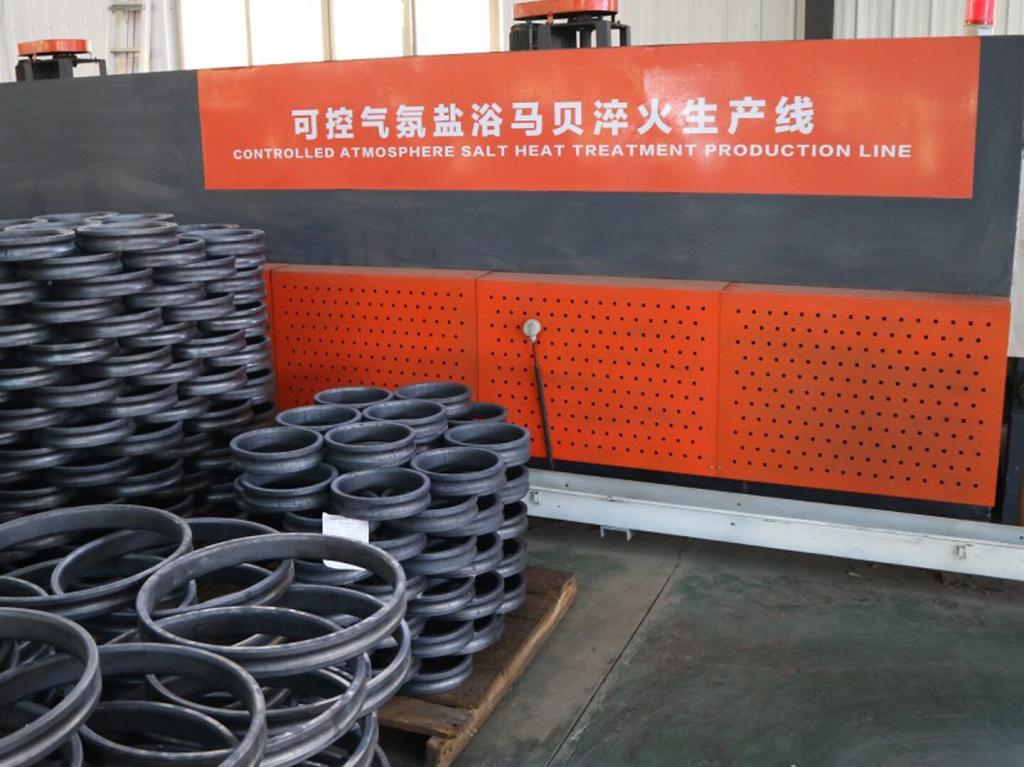
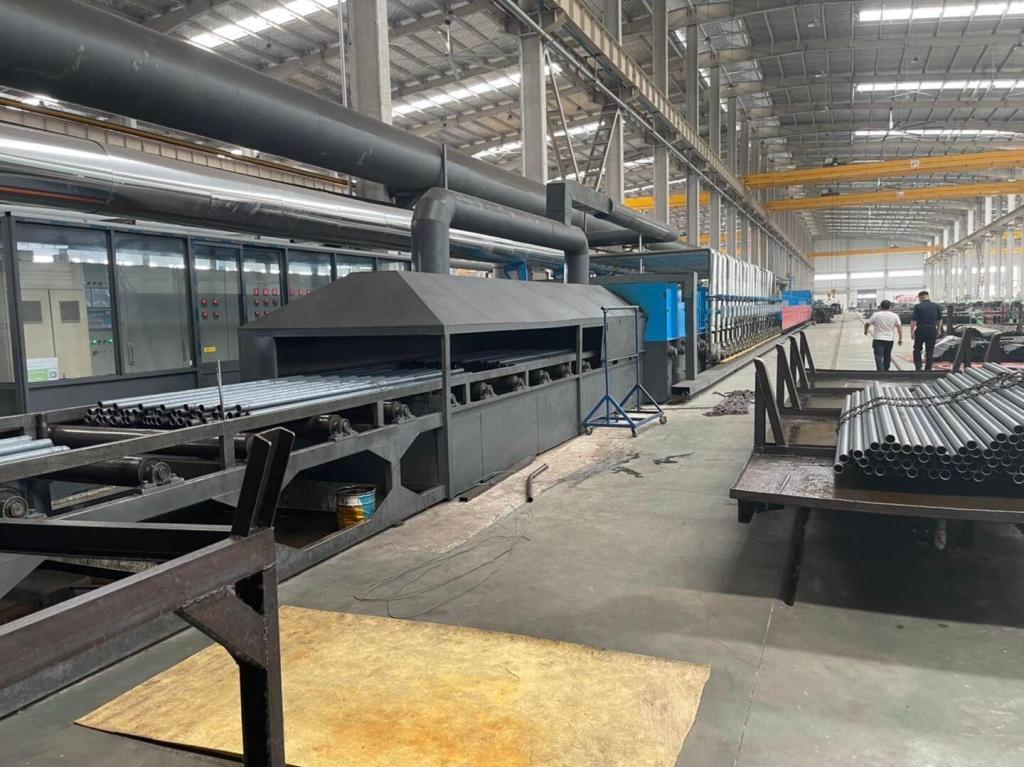

Advanced heat treatment equipment from Aubearing
In addition to the quantity of quenched undissolved carbides affecting material properties, the size, morphology, and distribution also affect material properties. In order to avoid the harm of undissolved carbides in bearing steel, it is required that the undissolved carbides be small (small quantity), small (small size), uniform (the size difference is very small from each other, and evenly distributed), round (each carbide is spherical). It should be pointed out that a small amount of undissolved carbides in bearing steel after quenching is necessary not only to maintain sufficient wear resistance, but also to obtain fine-grained cryptomartensite.
Residual stress after quenching and tempering
Bearing parts still have large internal stress after quenching and low-temperature tempering. Residual internal stress in parts has both advantages and disadvantages. After heat treatment of bearing steel, as the residual compressive stress on the surface increases, the fatigue strength of the steel increases. On the contrary, when the residual internal stress on the surface decreases, the fatigue strength of the bearing steel decreases. This is because the fatigue failure of the bearing occurs when it is subjected to excessive tensile stress. When a large compressive stress remains on the surface, it will offset the tensile stress of the same value, and the actual tensile stress value of the bearing steel will be reduced, causing fatigue When the strength limit value increases, when a large tensile stress remains on the surface, it will be superimposed with the tensile stress load and the actual tensile stress of the bearing steel will increase significantly, even if the fatigue strength limit value is reduced. Therefore, leaving a large compressive stress on the surface of bearing parts after quenching and tempering is also one of the measures to improve the service life (of course, excessive residual stress may cause bearing deformation or even cracking, so sufficient attention should be paid).
Impurity content of bearing steel
Impurities in bearing steel include non-metallic inclusions and harmful element (acid-soluble) content. Their harm to performance is often mutually reinforcing. For example, the higher the oxygen content, the oxide inclusions. The impact of impurities in bearing steel on the mechanical properties and failure resistance of parts is related to the type, nature, quantity, size and shape of the impurities, but usually has the effect of reducing toughness, plasticity and fatigue life.
As the size of inclusions increases, the fatigue strength decreases, and the higher the tensile strength of the bearing steel, the greater the decrease trend. As the oxygen content in bearing steel increases (oxide inclusions increase), the bending fatigue and contact fatigue life also decreases under the action of high stress. Therefore, for bearing parts operating under high stress, it is necessary to reduce the oxygen content of the bearing steel used in manufacturing. Some studies have shown that MnS inclusions in steel have an ellipsoidal shape and can wrap up harmful oxide inclusions, so they have less impact on reducing fatigue life and may even be beneficial, so they can be leniently controlled.

Control of material factors affecting bearing life
In order to keep the above-mentioned material factors that affect bearing life in the best state, it is first necessary to control the original structure of the steel before quenching. Technical measures that can be taken include: high temperature (1050°C) austenitization and rapid cooling to 630°C isothermal normalization to obtain pseudo Eutectoid fine pearlite structure, or isothermal treatment at 420°C to obtain bainite structure. Rapid annealing using the waste heat of forging and rolling can also be used to obtain a fine-grained pearlite structure to ensure that the carbides in the steel are fine and evenly distributed. When the original structure in this state is austenitized by quenching and heating, in addition to the carbides dissolved in the austenite, the undissolved carbides will aggregate into fine particles.
When the original structure in the steel is constant, the carbon content of quenched martensite (that is, the carbon content of austenite after quenching and heating), the amount of retained austenite and the amount of undissolved carbides mainly depend on the quenching heating temperature and holding time. , as the quenching heating temperature increases (for a certain time), the number of undissolved carbides in the steel decreases (the carbon content of quenched martensite increases), the amount of retained austenite increases, and the hardness first increases with the increase of quenching temperature. After reaching the peak value, it decreases as the temperature increases. When the quenching heating temperature is constant, as the austenitization time increases, the amount of undissolved carbides decreases, the amount of retained austenite increases, and the hardness increases. When the time is longer, this trend slows down. When the carbides in the original structure are fine, the carbides are easy to dissolve into austenite, so the hardness peak after quenching moves to a lower temperature and appears in a shorter austenitization time.
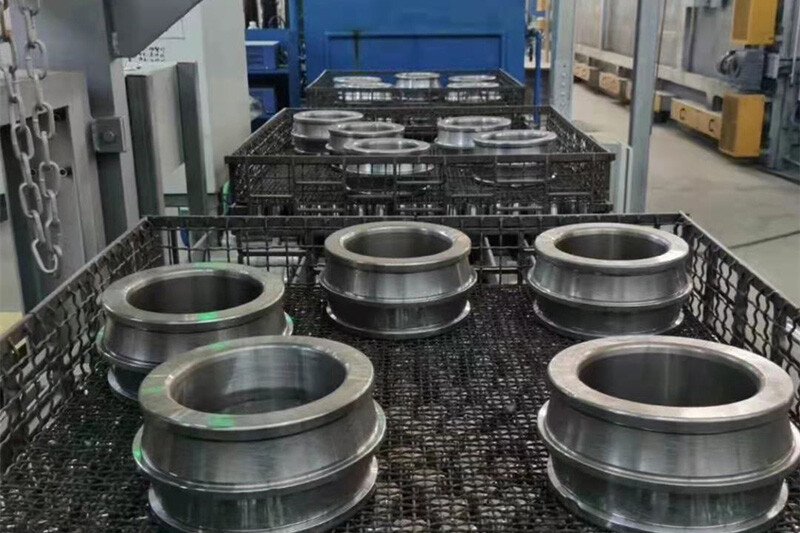
To sum up, after quenching GCrI5 steel, the optimal structural composition is about 7% undissolved carbides and about 9% retained austenite (the average carbon content of cryptocrystalline martensite is about 0.55%). over, when the carbides in the original structure are small and evenly distributed, when the microstructural composition at the above level is reliably controlled, it is beneficial to obtain high comprehensive mechanical properties and thus have a high service life. It should be pointed out that when the original structure with fine dispersed carbides is quenched, heated and kept warm, the undissolved fine carbides will aggregate and grow, making it coarse. Therefore, the quenching and heating time for bearing parts with this original structure should not be too long. Using a rapid heating austenitizing quenching process will achieve higher comprehensive mechanical properties.
In order to leave a large compressive stress on the surface of bearing parts after quenching and tempering, a carburizing or nitriding atmosphere can be introduced during quenching and heating, and surface carburizing or nitriding can be carried out for a short period of time. Since the actual carbon content of austenite is not high when this kind of steel is quenched and heated, which is much lower than the equilibrium concentration shown on the phase diagram, it can absorb carbon (or nitrogen). When austenite contains higher carbon or nitrogen, its Ms decreases. During quenching, the surface layer undergoes martensitic transformation behind the inner layer and core, resulting in larger residual compressive stress. After GCrl5 steel was heated and quenched in carburizing atmosphere and non-carburizing atmosphere (both were tempered at low temperature), the contact fatigue test showed that the service life of surface carburized steel was 1.5 times longer than that of non-carburized steel. The reason is that the surface of carburized parts has large residual compressive stress.
Conclusion
The main material factors and degree of control that affect the service life of high carbon chromium steel rolling bearing parts are:
(1) The carbides in the original structure of steel before quenching are required to be fine and dispersed. It can be achieved by using high temperature austenitization of 630℃ or 420℃, or by using the waste heat of forging and rolling for rapid annealing.
(2) After quenching GCr15 steel, it is required to obtain a microstructure of cryptocrystalline martensite with an average carbon content of about 0.55%, about 9% Ar, and about 7% undissolved carbides in a uniform and round state. This microstructure can be obtained by controlling the quenching heating temperature and time.
(3) After parts are quenched and tempered at low temperature, a large residual compressive stress is required on the surface, which helps to improve fatigue resistance. The surface can be carburized or nitrided for a short period of time during quenching and heating, so that a large compressive stress remains on the surface.
(4) The steel used to manufacture bearing parts requires high purity, mainly to reduce the content of O2, N2, P, oxides and phosphides. Electroslag remelting, vacuum smelting and other technical measures can be used to ensure that the oxygen content of the material is ≤15PPM.
